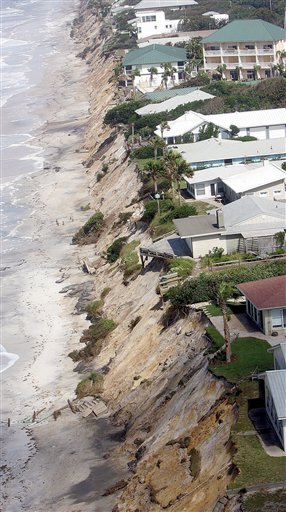10 States at Greatest Risk of Storm Surge Damage
10. Massachusetts
Total potential properties at risk: 107,657
Total potential exposure to storm surge damage: $50,284,887,752 (Ranks 9th)
States in the northeast can feel the impact of hurricanes, including those as far north as Massachusetts.
9. Georgia
Total potential properties at risk: 118,004
Total potential exposure to storm surge damage: $20,520,284,057 (Ranks 12th)
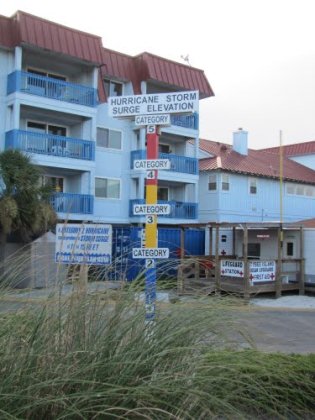
A storm surge marker elevation marker on Tybee Island, Ga.
8. South Carolina
Total potential properties at risk: 196,784
Total potential exposure to storm surge damage: $65,582,551,882 (Ranks 6th)
Charleston rounds out the top 10 U.S. metropolitan areas at risk for storm surge.
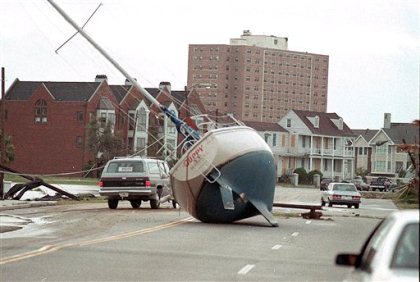
A sailboat lies in the street of Charleston, S.C., after it was washed ashore by
Hurricane Hugo in 1989. (AP Photo/Lou Krasky, File)7. North Carolina
Total potential properties at risk: 232,212
Total potential exposure to storm surge damage: $65,186,373,970 (Ranks 7th)
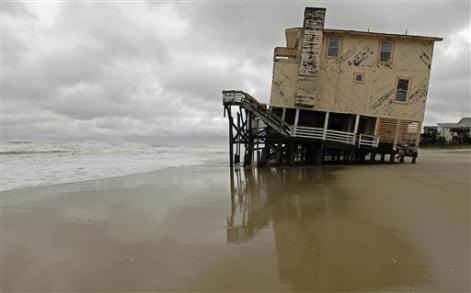
6. New York
Total potential properties at risk: 270,458
Total potential exposure to storm surge damage: $134,977,084,630 (Ranks 2nd)
Population density and property value, especially in the New York metropolitan area, are responsible for New York’s high ranking in both potential property damage and potential exposure for surges. No homes in New York City are considered in the “low risk” category for surges, and Hurricane Sandy proved how just a category 1 could impact the area. Nearly 116,000 homes in the New York metropolitan area alone were damaged by Hurricane Sandy, which was only a category 1 hurricane when it first made landfall in the New York metro area.
5. Virginia
Total potential properties at risk: 329,234
Total potential exposure to storm surge damage: $78,044,300,879 (Ranks 4th)
4. New Jersey
Total potential properties at risk: 350,577
Total potential exposure to storm surge damage: $118,796,101,231 (Ranks 3rd)
New Jersey’s low elevation increases the state’s risk for storm surges. In the last 100 years, the sea level along the New Jersey coast has risen over a foot, contributing to the increased risk in surges, and they are expected to continue rising. Professor of geology Daniel P. Schrang of Harvard University, was quoted in the Harvard Gazette, saying the 13-foot surge in New Jersey caused by Hurricane Sandy “will be the new norm on the Eastern seaboard.”
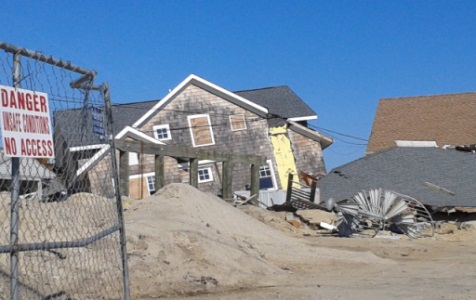
3. Texas
Total potential properties at risk: 369,577
Total potential exposure to storm surge damage: $50,947,847,377 (Ranks 8th)
Along its coastlines, Texas has long, gently sloping shelves, and the water is relatively shallow. This geographic feature produces relatively small waves, but increases storm surges. The shelf permits the surge to accumulate ahead of the storm, then pushed ashore with the movement of the hurricane. Cities along the Gulf of Mexico, particularly Houston and Corpus Christi are largely affected by hurricanes and surges.
2. Louisiana
Total potential properties at risk: 411,052
Total potential exposure to storm surge damage: $71,937,718,435 (Ranks 5th)
Though Louisiana does not have an expansive coastline, low elevation is responsible for putting it at risk. Hurricane Katrina proved just how damaging storm surges can be in Louisiana, particularly in New Orleans. Although improved levees and pumping systems were constructed in the aftermath of Katrina, Hurricane Isaac in 2012 resulted in an 11-foot surge, causing significant flood damage. CoreLogic predicts that just a one foot rise in ocean levels would succeed in putting another 2,000 homes at risk for storm surges in New Orleans, worth approximately $300 million.
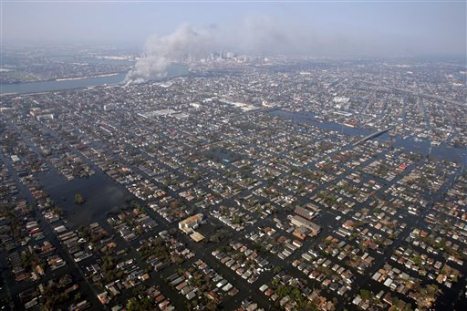
This September 2005 photo shows homes surrounded by floodwaters from Hurricane Katrina as fires burn near downtown New Orleans. (AP Photo/David J. Phillip)
1. Florida
Total potential properties at risk: 1,478,858
Total potential exposure to storm surge damage: $386,479,005,701 (Ranks 1st)
With 1,197 miles of coastline, it is no surprise that Florida comes in at No. 1 for the most potential properties at risk, as well as having the most potential exposure to storm surge damage. Five of the top ten metro areas in the United States at risk for storm surge are located in Florida, including Miami, Tampa, Cape Coral, Naples and Bradenton. In Tampa alone, nearly 301,045 properties are at risk, more than Massachusetts and Georgia combined.
